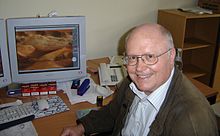 Lloyd V. Wallace, Ph.D, Emeritus Astronomer at the Kitt Peak National Observatory, passed away on October 26, 2015 in Tucson. Born in 1927 in Detroit, Michigan, in humble circumstances, Lloyd developed an early interest in solar and planetary astronomy and was a protégé of Ralph Nichols, a physics professor at the University of Western Ontario. Later he moved back to the United States and obtained his Ph.D in Astronomy at the University of Michigan in 1957 under Leo Goldberg. It was while he was at the University of Michigan that he met and married his wife, Ruth. At various times in his early career, and as the result of a complex series of events, he held Canadian, British, and United States citizenships and even found time to become an expert professional electrician. On acquiring his degree he obtained a position with Joe Chamberlain at the Yerkes Observatory and began a lifetime association with Chamberlain and Don Hunten (then a visitor to Yerkes) in atmospheric and spectroscopic research. In 1962 they moved to Tucson where Chamberlain became the head of the Space Division at the Kitt Peak National Observatory, a unit set up by the first director, Aden Meinel, to apply advances in technology to astronomical research. Lloyd was hired as the principal experimenter in the observatory’s sounding rocket program, which was set up by the National Science Foundation to provide staff and visitor access to the upper atmosphere for research purposes. With this program he supervised a series of 39 Aerobee rocket flights from the White Sands Missile range to investigate upper atmosphere emissions, aeronomic processes, and make astronomical observations over a period of about 10 years. He was also involved in the first attempts to establish a remotely controlled 50&rdquo telescope on Kitt Peak and efforts within the Division to create an Earth orbiting astronomical telescope. In parallel with these activities Lloyd conducted research which was largely focused on spectroscopic investigations. In the early days these included measurement of upper atmospheric emissions, particularly visual dayglow, the discovery of Raman lines in Uranus, Lightning spectrum, and auroral emissions. During this time he also pursued theoretical studies of resonant line transfer and some of the first modelling of the thermal structure of outer planet atmospheres. With the conclusion of the rocket program he turned his attention to high-resolution studies of the sun and cool stars and to long-term study of the variability of atmospheric pollutants (HCl, HF. CO2) over Kitt Peak. His solar and cool star studies led to the production of several high-resolution digital atlases extending from the UV to the thermal IR, and in addition, studies of line variability and the molecular content of sunspots. Lloyd was a very private and genuine person, but with a very sharp wit. He was highly productive with 135 published papers bearing his name.
Lloyd V. Wallace, Ph.D, Emeritus Astronomer at the Kitt Peak National Observatory, passed away on October 26, 2015 in Tucson. Born in 1927 in Detroit, Michigan, in humble circumstances, Lloyd developed an early interest in solar and planetary astronomy and was a protégé of Ralph Nichols, a physics professor at the University of Western Ontario. Later he moved back to the United States and obtained his Ph.D in Astronomy at the University of Michigan in 1957 under Leo Goldberg. It was while he was at the University of Michigan that he met and married his wife, Ruth. At various times in his early career, and as the result of a complex series of events, he held Canadian, British, and United States citizenships and even found time to become an expert professional electrician. On acquiring his degree he obtained a position with Joe Chamberlain at the Yerkes Observatory and began a lifetime association with Chamberlain and Don Hunten (then a visitor to Yerkes) in atmospheric and spectroscopic research. In 1962 they moved to Tucson where Chamberlain became the head of the Space Division at the Kitt Peak National Observatory, a unit set up by the first director, Aden Meinel, to apply advances in technology to astronomical research. Lloyd was hired as the principal experimenter in the observatory’s sounding rocket program, which was set up by the National Science Foundation to provide staff and visitor access to the upper atmosphere for research purposes. With this program he supervised a series of 39 Aerobee rocket flights from the White Sands Missile range to investigate upper atmosphere emissions, aeronomic processes, and make astronomical observations over a period of about 10 years. He was also involved in the first attempts to establish a remotely controlled 50&rdquo telescope on Kitt Peak and efforts within the Division to create an Earth orbiting astronomical telescope. In parallel with these activities Lloyd conducted research which was largely focused on spectroscopic investigations. In the early days these included measurement of upper atmospheric emissions, particularly visual dayglow, the discovery of Raman lines in Uranus, Lightning spectrum, and auroral emissions. During this time he also pursued theoretical studies of resonant line transfer and some of the first modelling of the thermal structure of outer planet atmospheres. With the conclusion of the rocket program he turned his attention to high-resolution studies of the sun and cool stars and to long-term study of the variability of atmospheric pollutants (HCl, HF. CO2) over Kitt Peak. His solar and cool star studies led to the production of several high-resolution digital atlases extending from the UV to the thermal IR, and in addition, studies of line variability and the molecular content of sunspots. Lloyd was a very private and genuine person, but with a very sharp wit. He was highly productive with 135 published papers bearing his name.
Tag: Obituary
Giovanni Picardi 1936-2015
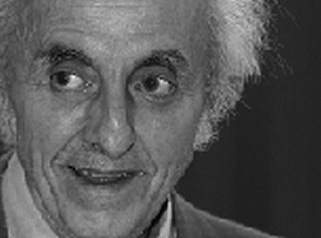
On the night of August 16th Prof. Giovanni Picardi passed suddenly away. Born in 1936
Prof Picardi has been during all his long career a brilliant and innovative radar scientist and
an admired teacher at the University of Rome Sapienza. Among the many radar projects he
carried on, he has provided fundamental contributions to all the radars presently operating
around other bodies of the Solar System and planetary radar sounding would not have
developed into the field of study we see today without his ingenuity and work. What he has
done and what he has given to radar science will remain for the present and future students
and scientists and the seeds of his activity will remain in the Italian and International community.
Enrico Flamini
Raul A. Baragiola 1945-2015
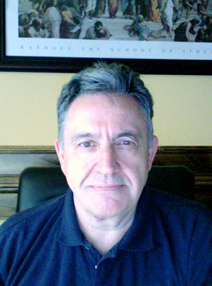 A man of diverse interests and avid curiosity, Raúl A. Baragiola, the Alice and Guy Wilson Chair Professor of Materials Science at the University of Virginia, passed away 21 June 2015, only few months after his seventieth birthday. Raúl began his career at the Balseiro Institute in Bariloche, Argentina, studying electron emission from solid materials, later expanding his expertise to ion, electron, and photon interactions with surfaces. His interest in the surface properties of semi-conductors and insulators led him to the field of Space and Planetary Science, where for the last 25 years he studied the interaction of radiation with condensed ices, minerals, and extraterrestrial materials.
A man of diverse interests and avid curiosity, Raúl A. Baragiola, the Alice and Guy Wilson Chair Professor of Materials Science at the University of Virginia, passed away 21 June 2015, only few months after his seventieth birthday. Raúl began his career at the Balseiro Institute in Bariloche, Argentina, studying electron emission from solid materials, later expanding his expertise to ion, electron, and photon interactions with surfaces. His interest in the surface properties of semi-conductors and insulators led him to the field of Space and Planetary Science, where for the last 25 years he studied the interaction of radiation with condensed ices, minerals, and extraterrestrial materials.
Born 31 March, 1945, Raul came to the US after working many years at the Centro Atómico in Bariloche, Argentina when concerns about the Argentina’s political stability and the safety of his family lead him to emigrate. He joined Ted Madey’s laboratory at Rutgers in 1988. He settled permanently at the University of Virginia (UVa) to direct the Laboratory for Astrophysics and Surface Physics (LASP) in 1990.
At UVa, Raúl started working on electronic sputtering from condensed gases and water ice in close collaboration with R. E. Johnson (UVa) and Walter Brown (AT & T Bell Laboratory), but he soon initiated key experiments designed to explore the complexities of sputtering of water ice. He had notable success in studying water ice photodesorption induced by Lyman-alpha light and its implications for interstellar ices. Subsequent efforts in a similar vein included investigating the existence of condensed O2 on Ganymede, measuring the sputtering yield of various ices, and characterizing the physical and chemical effects of radiations on laboratory analogs of planetary ices, while making laboratory data available to guide interpretation of astronomical spectra. In collaboration with R. W. Carlson (JPL), results from ion irradiation of water ice were used to explain the infrared signature of hydrogen peroxide on the surface of Europa. Raúl made numerous other significant research contributions towards understanding of the properties of planetary and interstellar water ice and the effects of radiation on these extraterrestrial surfaces. Recent ongoing research centered on laboratory astrochemistry, focusing on the synthesis, destruction and sputtering of plethora of condensed ices which include H2, CO, CO2, CH4, NH3, O2, O3, H2O2 and more complex species by ion and UV irradiation.
In collaboration with Lucy McFadden (NASA-Goddard) to understand the sulfur deficit on the surface of the Eros during NEAR’s encounter, Raul initiated research focused on the effects of space weathering on airless bodies. The combined in situ ability to measure reflectance, surface chemistry, and sputtered species due to solar-wind type ion irradiation was a hallmark feature of Raúl’s laboratory. In particular, Raúl was interested in the formation of Fe nano-particles and the effects of Earth’s atmosphere on ion bombarded silicates and minerals. With the discovery of water on the lunar surface, Raúl investigated formation for -OH species by solar wind proton irradiation of silicate minerals. Recent experiments characterizing electron emission from lunar soils echoed his early work on electron-induced secondary electron measurements.
Raúl was a prominent member in the Planetary Science and the Laboratory Astrophysics community and a frequent, vocal participant at DPS, AGU, and LPSC conferences. He was a Fellow of the American Physical Society (APS) and the Institute of Physics (London), receiving a Lifetime Achievement Award from the International Committee on Atomic Collisions in Solids and a NASA Achievement Award for his work on the Cassini mission. He served as a science member on the Cassini Plasma Spectrometer (CAPS) team, collaborating with D. T. Young at Southwest Research Institute (SwRI). Over the course of his career, Raúl published ~ 200 refereed scientific articles and book chapters, contributed to more than 140 conferences presentations and 80 invited lectures, advised more than 40 students and post-doctoral researchers on multiple continents, and collaborated with more research groups than is possible to name. His scientific legacy endures through them.
He leaves behind his dear wife of 46 years, Beatriz; three children: Verena, Valeria, and Pablo; his three precious grandchildren: Maya, Ella, and Leo who were the pride and joy of his later life; and his family of students and post-docs. All of whom will greatly miss Raul’s ability to simplify deeply complex problems, as well as his passion for life, philosophy, and wicked sense of humor.
————————————-
Catherine Dukes – Research Scientist – Laboratory for Astrophysics and Surface Physics – UVa
Ujjwal Raut – Research Scientist – Laboratory for Astrophysics and Surface Physics – UVa
Claudia J. Alexander 1959-2015
 Claudia J. Alexander (1959–2015), Ph.D. was a research scientist specializing in geophysics
Claudia J. Alexander (1959–2015), Ph.D. was a research scientist specializing in geophysics
and planetary science. She has worked for the United States Geological Survey and the
National Aeronautics and Space Administration. As member of the technical staff at the Jet
Propulsion Laboratory, she was the last project manager of NASA’s Galileo mission to Jupiter
and until the time of her passing had served as project scientist of NASA’s role in the European
led Rosetta mission to study comet 67P/Churyumov-Gerasimenko. Claudia was the 17th African
American woman to get a PhD in physics or astronomy (http://www.aawip.com/physics-astro-only-list.html)
and the winner was several awards, including the Emerald Honor for Women of Color in
Research & Engineering by Career Communications Group, Inc.at the National Women of Color
Research Sciences and Technology Conference. She was also very active in education and outreach,
and a mentor to several younger scientists. Our condolences go out to her family, co-workers and friends
at this time.
Stanton J. Peale 1937-2015
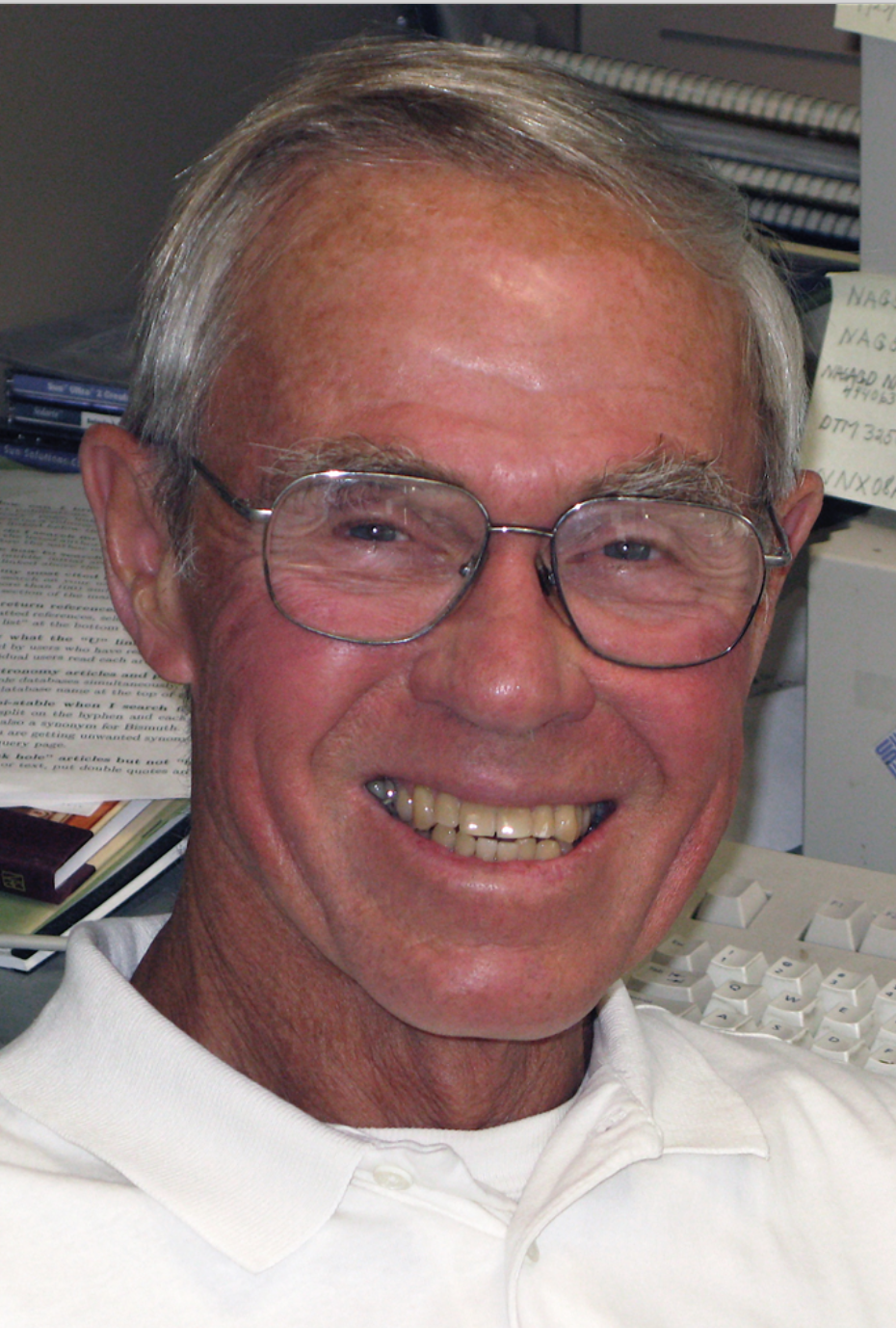 Stanton J. Peale passed away on May 14, 2015 in Santa Barbara from complications of leukemia. He was 78. Stan was surrounded by family and friends prior to and during his passing. He was a kind and brilliant planetary scientist with expertise in dynamics and geophysics. His career spanned over five decades. After earning his PhD at Cornell University in 1965, he took a faculty position at the University of California, Los Angeles, and then at the University of California, Santa Barbara, where he worked from 1968 until 2015. His most recent work was submitted for publication on May 11, 2015. His contributions include the prediction of widespread volcanism on Jupiter’s moon Io, the derivation of a general theoretical framework that governs the rotational states of bodies subject to tides, the study of tidal evolution in satellite systems, and the development of an ingenious procedure to determine the size and state of Mercury’s core. He was also a pioneer in the study of extrasolar planets, both in terms of their dynamics and their detection by microlensing. Stan’s work illustrated the power of physics to probe the interiors of planets. Stan was awarded the Newcomb Cleveland Prize (1979), the James Craig Watson Medal (1982), and the Brouwer Award (1992). He was elected to the National Academy of Sciences in 2009. He was a wonderful, beloved colleague and will be deeply missed.
Stanton J. Peale passed away on May 14, 2015 in Santa Barbara from complications of leukemia. He was 78. Stan was surrounded by family and friends prior to and during his passing. He was a kind and brilliant planetary scientist with expertise in dynamics and geophysics. His career spanned over five decades. After earning his PhD at Cornell University in 1965, he took a faculty position at the University of California, Los Angeles, and then at the University of California, Santa Barbara, where he worked from 1968 until 2015. His most recent work was submitted for publication on May 11, 2015. His contributions include the prediction of widespread volcanism on Jupiter’s moon Io, the derivation of a general theoretical framework that governs the rotational states of bodies subject to tides, the study of tidal evolution in satellite systems, and the development of an ingenious procedure to determine the size and state of Mercury’s core. He was also a pioneer in the study of extrasolar planets, both in terms of their dynamics and their detection by microlensing. Stan’s work illustrated the power of physics to probe the interiors of planets. Stan was awarded the Newcomb Cleveland Prize (1979), the James Craig Watson Medal (1982), and the Brouwer Award (1992). He was elected to the National Academy of Sciences in 2009. He was a wonderful, beloved colleague and will be deeply missed.
Arvydas J. Kliore 1935-2014
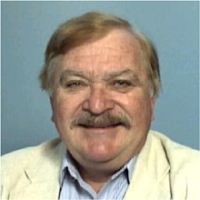 It is with great sadness that we report the loss of our colleague, Dr. Arvydas Kliore, who died suddenly on December 7, 2014 of natural causes. Arv was born in Lithuania and immigrated to the United States in 1949. He joined the engineering staff at JPL in 1962, where he had a distinguished career for over half a century with numerous publications and awards. A JPL Senior Research Scientist for more than 25 years, he was a pioneer in planetary radio science, especially in the study of planetary atmospheres and ionospheres, beginning with the first NASA planetary mission. Arv was a principalinvestigator or team member on every Mariner mission, on Pioneer 10/11, and on Pioneer Venus, and he served as Deputy Team Leader for the Galileo Radio Propagation Science Team. Most recently, he was a member of the Cassini Radio Science Team from 1990, serving as team leader for more than 20 years. Over his career, Arv attended nearly every DPS meeting in its 47-year history, a testament to his remarkable level of dedication and commitment to the community of planetary scientists.
It is with great sadness that we report the loss of our colleague, Dr. Arvydas Kliore, who died suddenly on December 7, 2014 of natural causes. Arv was born in Lithuania and immigrated to the United States in 1949. He joined the engineering staff at JPL in 1962, where he had a distinguished career for over half a century with numerous publications and awards. A JPL Senior Research Scientist for more than 25 years, he was a pioneer in planetary radio science, especially in the study of planetary atmospheres and ionospheres, beginning with the first NASA planetary mission. Arv was a principalinvestigator or team member on every Mariner mission, on Pioneer 10/11, and on Pioneer Venus, and he served as Deputy Team Leader for the Galileo Radio Propagation Science Team. Most recently, he was a member of the Cassini Radio Science Team from 1990, serving as team leader for more than 20 years. Over his career, Arv attended nearly every DPS meeting in its 47-year history, a testament to his remarkable level of dedication and commitment to the community of planetary scientists.
Arv set high standards for scientific achievement, generosity, modesty, personal integrity, and an infectious enthusiasm for life. Those of us who had the privilege of working with him for decades have benefited from his wisdom, fairness, sense of perspective grounded in long experience, and unstinting loyalty and support. We miss him greatly, and will carry his memory and many contributions with us.
– Dick French, on behalf of the Cassini Radio Science Team
Alberto Behar 1967-2015
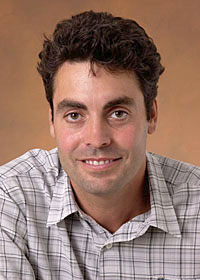 Dr. Alberto Behar, a long-time researcher at the Jet Propulsion Laboratory, died January, 9, 2015 in a small-plane accident near Van Nuys, CA.
Dr. Alberto Behar, a long-time researcher at the Jet Propulsion Laboratory, died January, 9, 2015 in a small-plane accident near Van Nuys, CA.
An expert on robotics for exploring extreme environments on Earth and other planets, Behar worked in the Avionics, Instruments, and Science divisions at JPL. He played a key role in developing in situ robotic systems for measuring Earth’s ice sheets in Antarctica and Greenland using submarines, ice rovers, and boats. He also participated in the exploration of Mars, serving as the Investigation Scientist for both the Dynamic Albedo of Neutrons (DAN) instrument on the Curiosity rover and the High Energy Neutron Detector on the Mars Odyssey orbiter. Alberto was a research professor in the School of Earth and Space Exploration at Arizona State University. He held a PhD in Electrical Engineering from the University of Southern California.
Thomas Wagner, the Cryosphere Program Scientist at NASA Headquarters, summed up Behar this way: “From his submarines that peeked under Antarctica to his boats that raced Greenland’s rivers, Alberto’s work enabled measurements of things we’d never known. His creativity knew few bounds. He is, and will forever be, sorely missed.”
Charles A. Barth 1930-2014
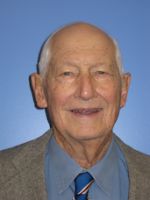 Charles A. Barth, Professor Emeritus at the University of Colorado, died on October 14th 2014. Charles grew up in Philadelphia where he attended Central High School. He received his B.S. in chemistry at Lehigh University. After serving in the Air Force, he earned his Ph.D. from UCLA. From 1958 to 1959 he was a postdoctoral fellow at the University of Bonn, Germany, followed by six years working at the CalTech/NASA Jet Propulsion Laboratory. From 1965 to 1992 he was the Director of the University of Colorado’s Laboratory for Atmospheric and Space Physics (LASP) and until 2002 a professor in the Department of Astrophysical and Planetary Sciences. He became Professor Emeritus in 2002.
Charles A. Barth, Professor Emeritus at the University of Colorado, died on October 14th 2014. Charles grew up in Philadelphia where he attended Central High School. He received his B.S. in chemistry at Lehigh University. After serving in the Air Force, he earned his Ph.D. from UCLA. From 1958 to 1959 he was a postdoctoral fellow at the University of Bonn, Germany, followed by six years working at the CalTech/NASA Jet Propulsion Laboratory. From 1965 to 1992 he was the Director of the University of Colorado’s Laboratory for Atmospheric and Space Physics (LASP) and until 2002 a professor in the Department of Astrophysical and Planetary Sciences. He became Professor Emeritus in 2002.
Between 1962 and 2002, Charles was active on numerous experiments studying the Earth and other planets, including Mariners 5, 6, 7, and 9, OGO-2, 4, 5, and 6, Atmosphere Explorer-C and D, the Solar Mesosphere Explorer, the Student Nitric Oxide Experiment, and instruments on Apollo 17, Pioneer Venus, Galileo, and Cassini. As a professor, he especially valued giving undergraduate students their first taste of space and planetary science by allowing them to design, build and operate spacecraft. He mentored and inspired many undergraduate and graduate students, postdoctoral fellows, and scientists, producing a lasting legacy of friends, colleagues, and outstanding scientists. He will be missed greatly.
Transmitted by A. Hendrix
Gerhard Neukum 1944-2014
Prof. Gerhard Neukum, our planetary scientist colleague, passed away on 21 September 2014. He was one of the most prominent planetary researchers in Germany and one of the world’s recognised experts in the field. He made a name for himself in his chosen field with the work he conducted on the chronology of Solar System bodies.
He was born in 1944 in the Sudetenland, he got his Ph.D. in physics on lunar craters at the University of Heidelberg, and his HDR in geophysics and planetary sciences at the University Louis and Maximilian in Munich in 1983, where he was appointed extraordinary professor in 1989. Since 1997, he occupied the position of professor of geosciences at the Free University of Berlin. He also headed the Institute of Planetology DLR between 1993 and 2002.
He was instrumental in the birth of ESA’s Mars Express Mission devoted to the in-depth study of the surface of Mars since late 2003, for which he instigated the development of the high-resolution stereo camera (HRSC) leading the team of scientists that analyzes the results of this experiment. G. Neukum was also part of the imaging team of the joint ESA-NASA Cassini- Huygens mission who is exploring the Saturnian system since 2004. He was furthermore involved in the ESA Rosetta mission which is expected to land on the comet Churyumov – Gerasimenko in November 2014, and in NASA’s Dawn mission to study the asteroid Vesta and the dwarf planet Ceres.
Gerry Neugebauer 1932-2014
Gerry Neugebauer, an astrophysicist who pioneered ways to peer into previously invisible sectors of outer space, helping to discover hundreds of thousands of planets, stars and galaxies, died on Sept. 26 in Arizona. Dr. Neugebauer was a former chairman of the division of physics, mathematics and astronomy at the California Institute of Technology and director of the Palomar Observatory there.
Gerhart Otto Neugebauer was born in Gottingen, Germany, on Sept. 3, 1932. He then changed his first name to Gerry. He graduated from Cornell with a degree in physics and earned a Ph.D. in physics from Caltech. From 1960 to 1963, Dr. Neugebauer served in the Army, which assigned him to the Jet Propulsion Laboratory where he designed the infrared equipment for the Mariner 2 mission to Venus in 1962, and then was hired at Caltech’s physics faculty.
Early on he worked with Robert B. Leighton of Caltech, who in the early 1960s developed a telescope that Dr. Neugebauer used to sweep the sky from the Mount Wilson Observatory. His persistence was rewarded when he found an object the size of the solar system. It turned out to be a newborn star, a discovery that shed light on how stars are formed. He and his colleagues went on to locate the exact center of the Milky Way.
He was considered a father of the field of infrared radiation, along with Frank J. Low of the University of Arizona. Dr. Neugebauer’s biggest achievement was in detecting and interpreting infrared radiation emanating from outer space. A major advance came in 1983, when he was the scientific director of the Infrared Astronomical Satellite, or IRAS, sponsored by NASA, Britain and the Netherlands, when he helped develop instruments sensitive enough to detect a 20-watt light bulb on Pluto or a speck of dust from a mile away. His team pinpointed more than a half-million sources of infrared radiation in the sky, many of them galaxies. It found rings of debris and dust around stars that were an early clue that planets exist beyond Earth’s solar system.
Dr. Neugebauer was a member of the National Academy of Sciences, the American Philosophical Society and the American Academy of Arts and Sciences. He received the Space Science Award of the American Institute of Aeronautics and Astronautics, and the Herschel Medal of the Royal Astronomical Society in Britain, of which he was a member.
[Condensed and edited extract from the NY Times – http://www.nytimes.com/2014/10/03/us/gerry-neugebauer-pioneer-in-space-studies-dies-at-82.html?_r=0]

